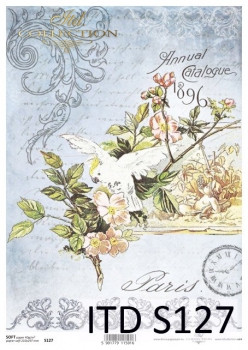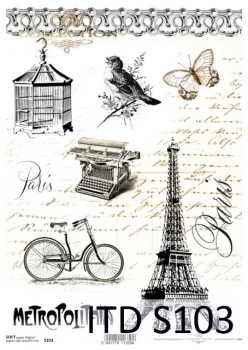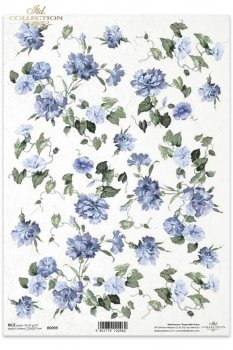-
Załączniki bezpieczeństwa
Załczniki do produktuZałączniki dotyczące bezpieczeństwa produktu zawierają informacje o opakowaniu produktu i mogą dostarczać kluczowych informacji dotyczących bezpieczeństwa konkretnego produktu
-
Informacje o producencie
Informacje o producencieInformacje dotyczące produktu obejmują adres i powiązane dane producenta produktu.ITD Collection
-
Osoba odpowiedzialna w UE
Osoba odpowiedzialna w UEPodmiot gospodarczy z siedzibą w UE zapewniający zgodność produktu z wymaganymi przepisami.
Decoupage paper SOFT ITD - ETNO
ITD Collection - decoupage paper for everyone.
FOLK ART
Kodra, Danuta Wojda, Lowicz, 2005 r.
Gwiozda ażurowa, Helena Rześna, Lowicz, 2009 r.
Wycinanka ażurowa, Krystyna Lis, Nowa Niespusza, 2013 r.
A paper cut-out from Łowicz
A paper cut-out from Łowicz is one of the more interesting forms of the Polish folk paper art. As the expression of artistic skills of Księżacy – the ethnic group which used to live in the Łowicz area called region łowicki within the present borders of the poviats of Łowicz and Skierniewice – it became the vital part of their material culture, and nowadays its symbol as well. A paper cut-out appeared in the first half of the 19th century when the paper mill in Konstatncin – Jeziorna near Warsaw started the production of polished colour paper, today called cut-out paper. Until the beginning of the 20th century, paper cut-outs were made to decorate the interiors of the peasants’ houses in the area of Łowicz.
Unusual pictorialness, complex form and rich range of topics are the main characteristic features of the Łowicz paper cut-outs. They are created by the method of multilayer sticking – at first on the white paper, and then consecutively one by one colourful layer, beginning with the biggest elements till the smallest ones. Scissors used to shear sheep and glue made from boiling rye flour have been traditionally used to create paper cut-outs until today.
Paper cut-outs were placed in the certain parts of a traditional peasant house. The round gwiozdy were hung on the beams under the ceiling. The rectangular horizontal kodry vel. tofle were placed among them. Kodry of great sizes were also hung above the bench between the windows. Vertical tasiemki, consisting of two stripes of paper, were placed between the paintings of the Saints.
Since the beggining of the 20th century, the paper cut-outs of Łowicz have been attracting people who were not connected with the rural community – folk experts, collectors, artists. The paper cut-outs were discovered and presented to the world by the Cracow painter, the student of Jan Matejko, connected with the Polish Applied Art Institution – Towarzystwo Polska Sztuka Stosowana – Leonard Strojnowski. Staying in the area of Łowicz for some time, he gathered the collection of the paper cut-outs and presented it on the exhibition in Cracow Sukiennice in 1901.
In the 1920s, openwork cut-outs appeared as a new form of the paper cut-outs. Since then, paper cut-outs have become the souvenir from the region – eagerly bought by tourists visiting Łowicz, mainly during the famous processions of the Corpus Christi Day.
Until now, in Łowicz and the area nearby, there are women who create traditional forms of paper cut-outs and their modern types as well (openwork paper cut-outs in various shapes, congratulatory scrolls, postcards). Flowery trees, animals, such as cocks, peacocks, horses; and people wearing traditional folk costumes, presented during annual or family rites, are the most favourite and frequently presented patterns by the former and present artists.
The largest collection of Łowicz paper cut-outs in Poland and in the world, consisting of over 2,600 items, is presented in the Museum of Łowicz.










































 19158 szt.
19158 szt.













